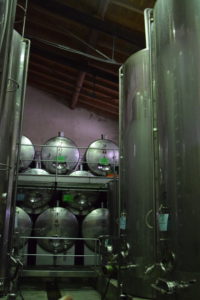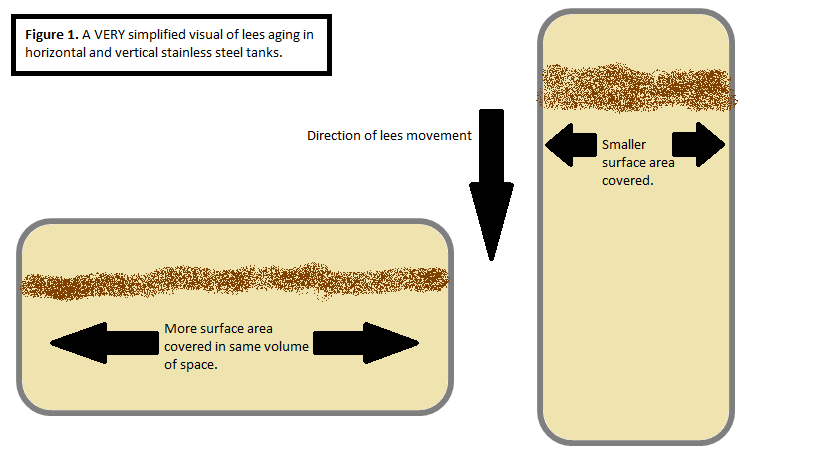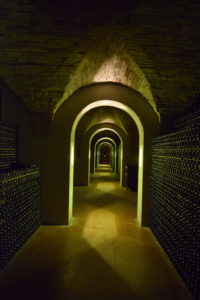Note: Last fall, I was invited to visit the Italian sparkling wine region, Franciacorta (thank you, Jeremy Parzen (Do Bianchi) and the Franciacorta Consortium!). The following is a post based upon some of the information gleaned on that trip.
Disclaimer: the trip was paid for by the Franciacorta Consortium, however, any and all opinions are my own.
One of the most beautiful things about wine is how different one wine can be compared with another, particularly when those wines are made so close together geographically. Take, for example, the Italian wine region of Franciacorta. Even while covering a relatively small area of about 20,000 hectares, the differences between individual producers and individual wines within each producer is vast. Aside from the fact that the soil and geology is vastly different from one corner of Franciacorta to the next, nearly each producer employs a unique method of winemaking or grape growing that makes their wines stand out against all the rest.
As an example, let’s take a closer look at the Franiacorta producer, Mosnel, established in 1836 on the Camignone estate, where today they have 139 hectares under vine. They currently produce seven Franciacortas (3 non-vintage, 3 vintage, and 1 nonvintage that is still in the cellar) and two still wines, with each wine carefully vinted following decades of experience and experimentation.
One of the most interesting vinification methods used by Mosnel for some of their Franciacortas is the use of horizontal stainless steel tanks during the post-fermentation period, as opposed to using the vertical tanks that are much more common in winemaking.
According to Lara Mercandelli, Events & Hospitality Coordinator for Mosnel, horizontal stainless steel tanks in Franciacorta are “quite unusual to see”. Out of the 54 stainless steel tanks at Mosnel, 13 of them are horizontal. Additionally, the horizontal tanks utilized by Mosnel are smaller than the vertical tanks used, specifically, they use vertical tanks in 300 or 150hL volumes while the horizontal tanks are only 44 or 57hL in volume.
Mercandelli continued by saying that the biggest difference between the two types of tanks is not during fermentation, but afterwards. Specifically, during the lees aging that is employed during the production of their Franciacorta wines. After fermentation is complete, the wines at Mosnel remain in the tanks for 6 or 7 months to age on the lees, which is basically when the yeast cells mix throughout the wine by way of gravity.
According to Mercandelli, the degree of complexity and structure is higher in Franciacorta aged in horizontal tanks compared with vertical tanks. Because of this, at Mosnel they use the higher quality first press juice/must in the horizontal tanks, and the second press (lesser quality) juice/must in the vertical tanks. This higher quality must in the horizontal tanks is then only used in the vintage Franciacorta (including the Saten) at Mosnel, while the must in the vertical tanks is used for their nonvintage Franiacortas.
Aging on the lees
Aging on the lees, or “sur lie”, is a practice employed by some winemakers for adding complexity and specific aromatic and flavor characteristics to a wine. Lees are basically the dead yeast cells and other particles left over after the first fermentation process is complete. These particles are left in the wine over an extended period of time, with gravity acting to gently pull the lees through the wine and eventually resting on the bottom of the vessel. Sometimes winemakers choose to perform a process called “bâtonnage”, which effectively re-suspends, or stirs up, the lees, increasing the contact time and thus extracting even more flavors and aromas over the aging period.
While only on occasion do winemakers use the process for red wines, most of the time lees aging is employed for some white wines and sparkling wines. Lees aging is often done in oak barrels, which add another layer of aromatic complexity to the wine, which is not always desired in certain wines like vintage Franciacortas and Satens from Mosnel.
Bringing it back to basics: Surface Area Physics
So what makes horizontal aging on the lees more advantageous than vertical? In essence, it all boils down to one simple property of physics: the surface-area-to-volume ratio. In the most basic sense, surface-area-to-volume when talking about lees aging is how much the surface area of the lees comes in contact with the total volume of wine within the vessel.
Let’s think about it in a very simplified way. Imagine we have two tanks: one vertical and one horizontal. Each tank holds the exact same volume of wine. Now, imagine you have a “lees pancake”, if you will, sitting on top of the wine. Overtime, that pancake will make its way down through the wine by way of gravity, eventually settling on the bottom of the tank. What you’ll notice is that for the exact same volume of wine, the surface area of the “lees pancake” is much greater when the tank is horizontal versus when the tank is vertical, therefore, over the same amount of time more interactions can occur between the wine and the lees in the horizontal tank, theoretically obtaining greater complexity and character than in a vertical tank. (Figure 1).
Of course, in reality, the lees aren’t all falling together in a uniform pancake throughout the wine, but that shouldn’t matter for our proof of concept here. In reality, the many yeast cells and other components that make up the lees are falling independently and at their own pace over time, so the biggest difference between reality and the proof of concept example is that the surface-area-to-volume (lees:wine) is even greater, so even more complexity is extracted than in the proof of concept example.
Is horizontal REALLY the way to go?
To get an outsiders’ opinion on the subject of using horizontal stainless steel tanks for lees aging, I spoke with Randall Grahm, winemaker and founder of Boony Doon Vineyard in Davenport, CA. Known for his experimental and innovated style, Grahm agreed that “horizontal tanks definitely the way to go if you’re into lees contact, simply because of the greater surface area.”
He went on the say that “we first noticed this years ago when we were using the 350 liter Taransaud barrels that were called “cigars” because of their elongated shape, and observed a unique silky texture to the wines. Taking that further, we’ve adopted the practice of ageing wine in 5 gallon glass demijohns, on their side, to take the surface area phenomenon one step further, and we’ve had great luck with that.”
Conclusions
There are countless viti- and vinicultural methods that can be utilized to create a unique wine. Employing lees aging is just one way some white and sparkling wine producers treat their wines, while some, like Mosnel, add extra levels of complexity by introducing horizontal stainless steel tank lees aging for some of their wines.
With the many differences in viticulture and winemaking practices from producer to producer, and even from wine to wine within a single producer, the sheer variety of wines available to us as wine lovers and consumers is incredible, and all the more reason to continually experiment with different wines to educate and evolve our palates to appreciate all that the global wine world has to offer.



